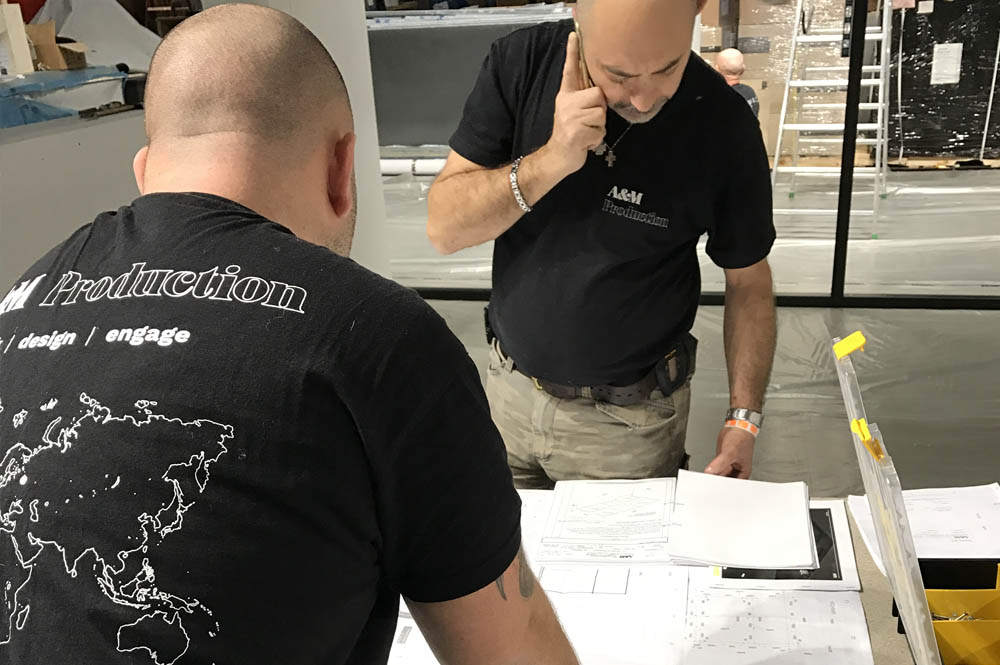
Countless rules, one simple solution
Exhibiting in the US can be an opportunity to make some headway in a market where anything is possible, but you have to know what you’re doing. You’ll encounter numerous different regulations and practices throughout the country that will affect various aspects of planning and producing your stand: everything from tiny details (such as the maximum allowable height of a stand) to the most fundamental matters (for example, the way things need to be delivered and unloaded at the venue site). The entire approach to setting up and managing exhibition stands in the United States is significantly different from the European tradition.
A few concrete examples?
- Some states, such as New York, Illinois, and Pennsylvania, require hiring union labor. This means the company can’t utilize their own staff or their preferred assembly team. Instead, they need to rely on a local labor pool, one often unfamiliar with European exhibition standards.
- In other states, such as Nevada, it’s possible to use your own staff, but you’re still required to employ union labor for the stand’s electrical installations.
- For unloading and material handling, you can’t just rent a basic forklift and unload everything yourself—you need to go through a general contractor who will charge based on the weight of the material unloaded after the event. This applies throughout the US.
Due to a lack of experience in the US, many foreign exhibition stand companies aren’t up to speed on all these rules and regulations, and risk running into unpleasant surprises such as stiff fines or huge, unexpected charges. Even worse, their inexperience could land the exhibitor in a truly serious situation.
That’s why we offer the most practical solution: a turnkey service for any type of exhibition stand in the United States, along with the highest level of service every step of the way.
Our A&M team will take care of:
- Filling out all exhibition paperwork for our clients;
- Obtaining project approval from the exhibition venue.
- Keeping track of all deadlines relating to the event;
- Calculating and including an estimate for material handling costs, if requested by the client.
- Handling all direct communication with the organizer, the event venue, and the general contractor;
- Outlining all specific costs relating to the event for the client.
A path through the regulatory maze
We have a long track record of assisting clients with their exhibition needs in the United States, as well as a local A&M branch office in Atlanta. This combination positions us to leverage our comprehensive knowledge to navigate all the quirks and details that make the American exhibition environment so challenging.
We’ve already mentioned differences in laws, procedures, and all the red tape, but even exhibition stands in the US follow significantly different design precepts compared to other major markets.




Sorry, the comment form is closed at this time.